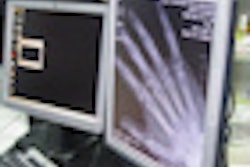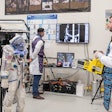Dear Digital X-Ray Insider,
The American Association of Physicists in Medicine (AAPM) meeting just wrapped up last week in Vancouver, British Columbia, and there was a wealth of presentations on ways to optimize digital x-ray technology.
Take, for example, this edition's Insider Exclusive, in which contributing writer James Brice examines how medical physicists in Iran were able to reduce radiation dose for radiography exams throughout their health system.
The initiative relied heavily on applying European guidelines for radiation dose to department operations. Staff members were trained on proper use and maintenance of equipment, and dose reductions were measured for 12 commonly used radiography techniques. Find out how they performed by clicking here.
In another presentation from the AAPM show (which was also the scene of the annual confab of the Canadian Organization of Medical Physicists, or COMP), researchers from Kuwait were also able to reduce dose, this time for digital radiography studies of the lumbar spine.
They focused on changing the kVp settings from those recommended by manufacturers. Radiation dose dropped sharply, and while image quality was slightly worse, the difference wasn't statistically significant. Learn more by clicking here.
In other news, read about an evaluation of a recently introduced computed radiography technology that uses a storage phosphor plate with needle-shaped crystals. Austrian researchers found that it reduced radiation dose in knee studies by up to 50%.
Finally, learn about a new series of phantoms developed by researchers in Brazil that are designed to replicate more closely the wide variety of body shapes and masses encountered in the real world. The researchers believe the phantoms could help medical physicists develop more accurate dose estimates.
Get these stories and more in your Digital X-Ray Community, at xray.auntminnie.com.



















